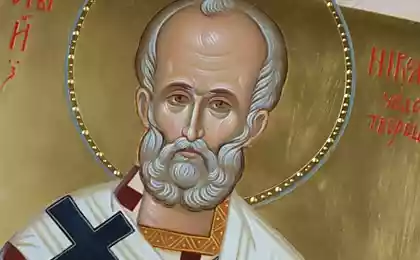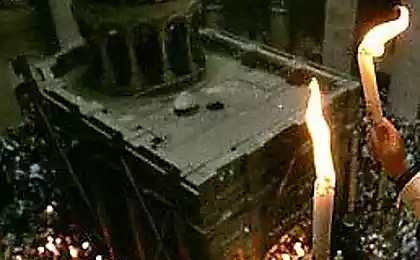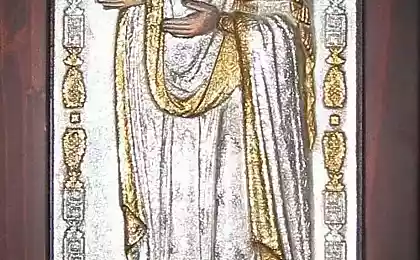858
Cat Monastery of St. Nicholas
Blogger smarty-yulia wrote in his LiveJournal: During the storm, Saint Helena in prayer made a vow to found several monasteries in Cyprus, if the Lord would save their ship from destruction. Cat Monastery of St. Nikolaya- one of them. If Cyprus - a paradise for lovers of cats, the cat's monastery - the paradise twice, there are a lot of cats, they are like, grooms and cherish. If you are planning a visit to the monastery, be sure to grab with some food for its inhabitants, they will appreciate it ...)))
11 ph
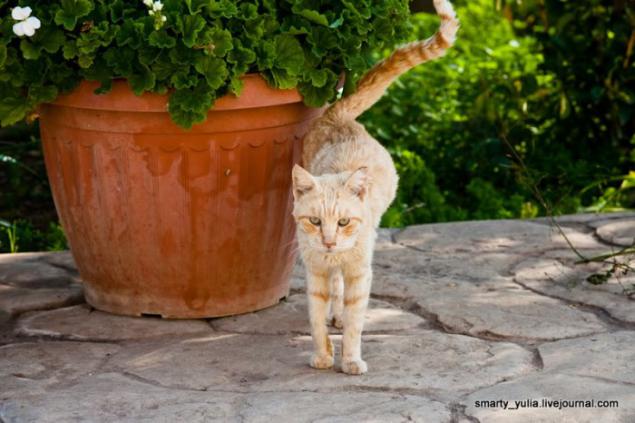
Getting there:
The monastery is located on the peninsula of Akrotiri in Limassol area. On the route Paphos-Limassol sezzhaye on the index "Kolossi Castle." Once you see the castle, continue straight towards the sea (on your left will be a salt lake), and you will soon see a pointer to the monastery (will turn to the left). The road is good, asphalted.

A bit of history.
In the 4th century BC in Cyprus for 17 years was a terrible drought. This led to the fact that the island has bred a huge number of snakes that threatened human life. Some local residents in fear to leave the island. District Cape was just impassable. It was at this time in Cyprus falls Saint Helena. She was shocked by such an abundance of creeping reptiles. And on her orders to fight with the snakes on the island were brought about 1,000 cats. For several years, cats have successfully coped with their mission and snakes were killed. Since that time, the ancient name of the cape Kargeya, next to which the monastery is located, was gradually replaced by a new - Cavo Gata, which translated from Greek means Cat's cape.

Not far from the place where Helen went to the shore, a monastery was founded St. Nicholas Ayios Nikolaos ton Gaton, became a refuge for cats brought to the island. Medieval pilgrims specially came to the monastery to see that the cats come running at the sound of a dinner bell monastery. Sated, they again begin their direct responsibilities - the hunt for snakes.
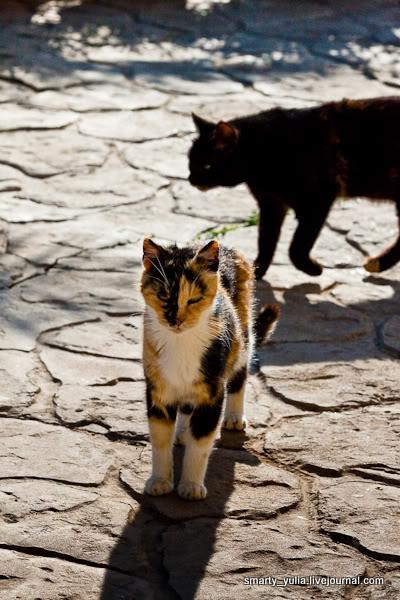
In 1580, the father of Stephen Lusignan, talking about the monastery, mentioned that the Byzantine monks, who at that time owned by the monastery of St. Nicholas, were donated to the adjacent land on one condition: the brothers had to take care of at least a hundred cats, providing them with food twice a day.
One legend says that the monastery cats were trained to to such an extent that when the church bell rang for the first time, they are on the team, went on the hunt for snakes, and only heard the bell ringing for the second time, had the right to return to the monastery .
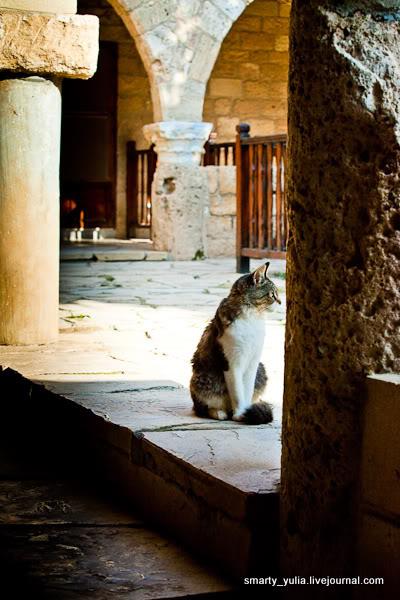
At the end of the XV century the monastery was almost completely destroyed by an earthquake. During the Turkish invasion of the Muslims devastated the monastery, killing of the monks and captured the rest. Left without food cats left the place, and dispersed throughout the island. This explains such a great mixture of color cats now living in Cyprus.

Metropolitan Makarios in 1750, revived the monastery, but soon he was again abandoned. In 1960, the church of the monastery, built in the XIII century, was rebuilt after having been found ancient frescoes on its walls.
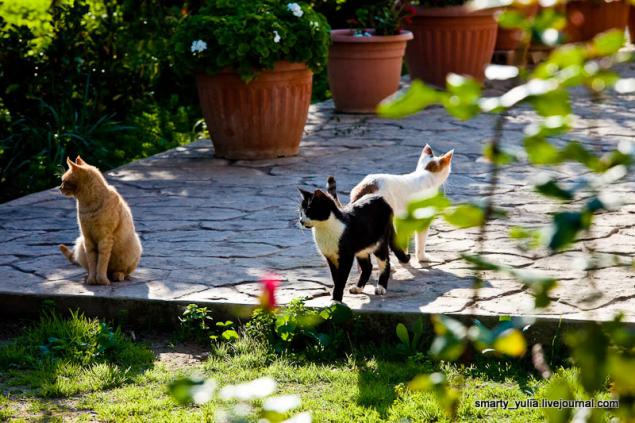
The beginning of the modern history of the monastery is in 1983, when with the help of Metropolitan Chrysanthos Limasolskogo he was reborn as a female. When the nuns came to the monastery in 1983, they found in its territory of any cat. But the snakes were abundant. I had to start again from the beginning - there was the first pair of cats. Nearly 10 years of nuns cared for the cats alone. In 1992 they were joined by three other nuns. In recent years, the monastery lived six nuns and about 60-70 cats. None of the snake in the vicinity of the monastery has not recently been observed. The main occupation of the sisters-nuns - icon-painting. Ordinary tourists to get to the monastery, alas, can not remains to admire the cat out of the fences.
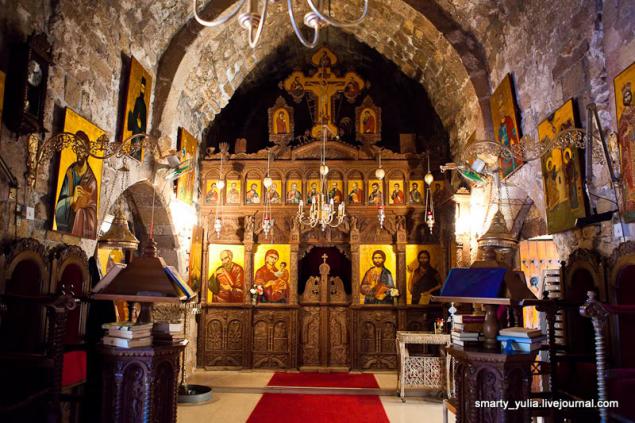
Life in the monastery begins feline "breakfast": all fluffy and hairless cats, big and small, old, young and kittens, modern descendants of those who saved the island from snakes gather for a meal in the monastery courtyard. Currently, the population of striped fluffy replenished mainly due to abandoned cats who are brought here and left. Murka to themselves, and none of them are not particularly looked after, because any cat dream - to walk by itself.
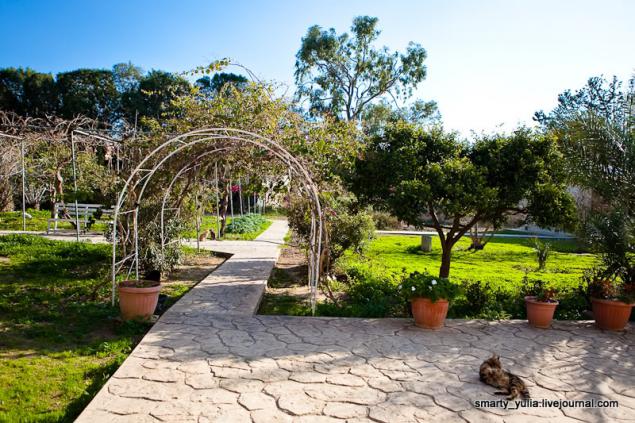
The monastery receives a small subsidy from the state, but it is not enough to feed all the feline tribe. And so their diet consists mainly of pasta, soaked in warm water, bread and canned food, which brought volunteers monastery. But the cat on his fate is not complaining, judging by their carefree appearance, they feel very good!)

11
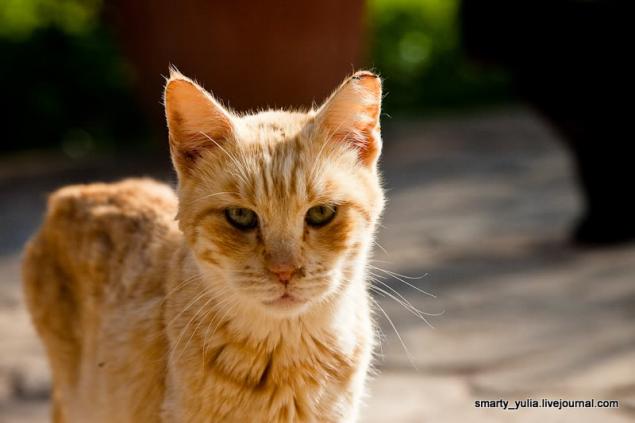
Source:
11 ph

Getting there:
The monastery is located on the peninsula of Akrotiri in Limassol area. On the route Paphos-Limassol sezzhaye on the index "Kolossi Castle." Once you see the castle, continue straight towards the sea (on your left will be a salt lake), and you will soon see a pointer to the monastery (will turn to the left). The road is good, asphalted.

A bit of history.
In the 4th century BC in Cyprus for 17 years was a terrible drought. This led to the fact that the island has bred a huge number of snakes that threatened human life. Some local residents in fear to leave the island. District Cape was just impassable. It was at this time in Cyprus falls Saint Helena. She was shocked by such an abundance of creeping reptiles. And on her orders to fight with the snakes on the island were brought about 1,000 cats. For several years, cats have successfully coped with their mission and snakes were killed. Since that time, the ancient name of the cape Kargeya, next to which the monastery is located, was gradually replaced by a new - Cavo Gata, which translated from Greek means Cat's cape.

Not far from the place where Helen went to the shore, a monastery was founded St. Nicholas Ayios Nikolaos ton Gaton, became a refuge for cats brought to the island. Medieval pilgrims specially came to the monastery to see that the cats come running at the sound of a dinner bell monastery. Sated, they again begin their direct responsibilities - the hunt for snakes.

In 1580, the father of Stephen Lusignan, talking about the monastery, mentioned that the Byzantine monks, who at that time owned by the monastery of St. Nicholas, were donated to the adjacent land on one condition: the brothers had to take care of at least a hundred cats, providing them with food twice a day.
One legend says that the monastery cats were trained to to such an extent that when the church bell rang for the first time, they are on the team, went on the hunt for snakes, and only heard the bell ringing for the second time, had the right to return to the monastery .

At the end of the XV century the monastery was almost completely destroyed by an earthquake. During the Turkish invasion of the Muslims devastated the monastery, killing of the monks and captured the rest. Left without food cats left the place, and dispersed throughout the island. This explains such a great mixture of color cats now living in Cyprus.

Metropolitan Makarios in 1750, revived the monastery, but soon he was again abandoned. In 1960, the church of the monastery, built in the XIII century, was rebuilt after having been found ancient frescoes on its walls.

The beginning of the modern history of the monastery is in 1983, when with the help of Metropolitan Chrysanthos Limasolskogo he was reborn as a female. When the nuns came to the monastery in 1983, they found in its territory of any cat. But the snakes were abundant. I had to start again from the beginning - there was the first pair of cats. Nearly 10 years of nuns cared for the cats alone. In 1992 they were joined by three other nuns. In recent years, the monastery lived six nuns and about 60-70 cats. None of the snake in the vicinity of the monastery has not recently been observed. The main occupation of the sisters-nuns - icon-painting. Ordinary tourists to get to the monastery, alas, can not remains to admire the cat out of the fences.

Life in the monastery begins feline "breakfast": all fluffy and hairless cats, big and small, old, young and kittens, modern descendants of those who saved the island from snakes gather for a meal in the monastery courtyard. Currently, the population of striped fluffy replenished mainly due to abandoned cats who are brought here and left. Murka to themselves, and none of them are not particularly looked after, because any cat dream - to walk by itself.

The monastery receives a small subsidy from the state, but it is not enough to feed all the feline tribe. And so their diet consists mainly of pasta, soaked in warm water, bread and canned food, which brought volunteers monastery. But the cat on his fate is not complaining, judging by their carefree appearance, they feel very good!)

11

Source:







